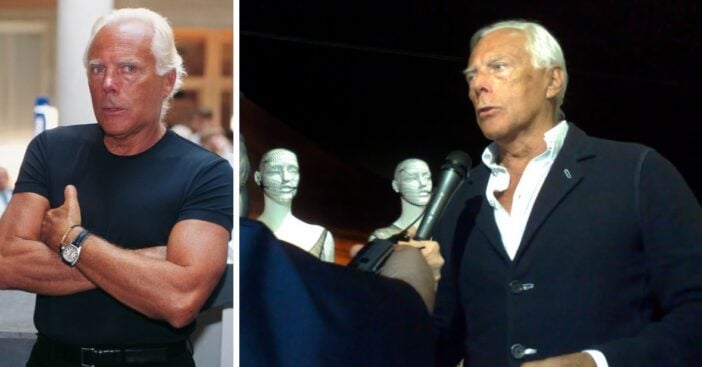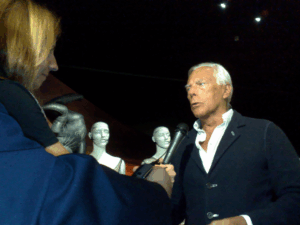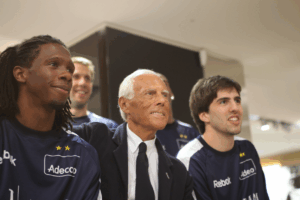
- Giorgio Armani died on September 4 at the age of 91.
- Reports state he had been working on various projects until the end of his life.
- Armani is remembered as a groundbreaking fashion designer responsible for several enduring styles, including the power suit and casual jackets.
On Thursday, September 4, Giorgio Armani died. He was 91 years old when he died, and he passed at his home in Milan. News of his death comes from the Armani Group, and he reportedly continued working “until his final days, dedicating himself to the company, the collections and the many ongoing future projects.”
Armani rose to global prominence as the Italian designer who transformed both men’s and women’s fashion with his minimalist, soft-shouldered tailoring and neutral palette. Launching his own label in 1975, he became the driving force behind the “power suit” for women and clean, unstructured jackets for men. Over the following decades, he expanded his brand into beauty, accessories, luxury hospitality, and home furnishings, all while maintaining tight creative control, building a fashion empire worth billions.
Rise of the Giorgio Armani empire

Giorgio Armani was born in 1934 in Piacenza, Italy, the son of a transport accountant and a homemaker. He grew up during the hardships of World War II and initially pursued medical studies at the University of Milan. After two years, he left university, completed compulsory military service (during which he worked in a military hospital in Verona), and upon his return to Milan, began working as a window dresser and sales assistant at the department store La Rinascente. His early work there allowed him to hone skills in visual merchandising and garment selection.
In the early 1960s, Armani transitioned into fashion design, joining Nino Cerruti’s menswear division, “Hitman,” where he spent several years refining his tailoring and design sensibilities. By the early 1970s, he was freelancing for multiple fashion houses and developing his own aesthetic. In 1975, with architect Sergio Galeotti as his business partner, Armani formally launched his label, presenting his first ready-to-wear collection and laying the foundation for what would become a global fashion empire.
Shaping an industry for decades to come

In his later years, Giorgio Armani steadily expanded his brand into a full-fledged lifestyle empire, maintaining creative control across fashion, accessories, beauty, home furnishings, restaurants, and luxury hotels. Notably, he launched the Armani Hotel in Dubai’s Burj Khalifa in 2010 and followed with another in Milan, each reflecting his signature restrained aesthetic. He continued to oversee new collections—including fine jewelry and Armani/Casa interiors, in addition to his flagship lines like Emporio Armani and Armani Privé.
Even as health concerns led him to step back from runway shows in 2025, Armani remained actively involved in company affairs and succession planning. In his final weeks, he expressed a desire for smooth continuity and named trusted collaborators and family members as successors, signaling a careful handover of his creative and business legacy. Despite prolonged work habits and global recognition, he acknowledged his greatest regret was not spending more time with friends and family—an honesty that surfaced in his final interview and added a personal turn to a life devoted to design.

